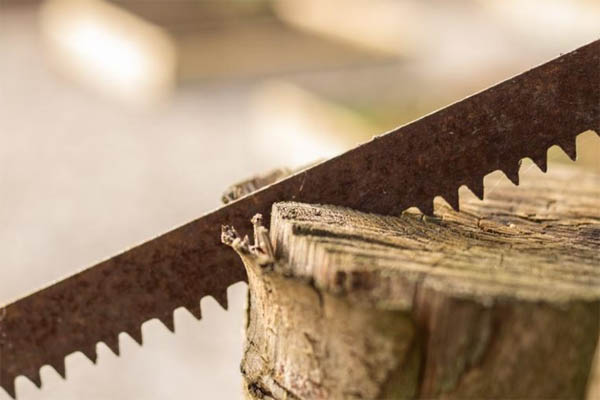Safety Precautions When Using Handsaws: Crafting with Caution
In the captivating realm of woodworking, where creativity converges with craftsmanship, safety forms the cornerstone of every endeavor.
Among the tools that artisans wield, the handsaw holds a significant place.
However, the symphony of woodworking is not without its risks.
This comprehensive guide explores the imperative safety precautions when using handsaws, delving into potential hazards, the significance of protective equipment, proper workspace setup, safe handling techniques, and more.
By understanding and implementing these precautions, you transform your woodworking space into a haven of creativity and security.
Understanding Potential Hazards
Woodworking, while fulfilling, is not without its perils. Acknowledging potential hazards is the first step to mitigating them:
- Risk Identification: Recognize the common dangers associated with handsaw use, including cuts, accidental contact with saw teeth, and the danger of kickback.
- Consequences of Neglect: Disregarding safety precautions can lead to injuries, ranging from minor cuts to more severe accidents.
Personal Protective Equipment (PPE)
Protecting yourself is paramount in any woodworking venture:
- Role of PPE: Personal Protective Equipment (PPE) acts as your armor, guarding against potential hazards.
- Essential Safety Gear: Equip yourself with safety glasses or goggles to shield your eyes, cut-resistant gloves to protect your hands, and hearing protection to guard against the noise of cutting.
Workspace Setup
Your workspace is the canvas upon which you create. Organize it for safety and efficiency:
- Importance of Organization: A tidy workspace reduces the risk of accidents and helps you focus on your task.
- Illuminating Visibility: Adequate lighting ensures you can see your work clearly, minimizing the chance of errors.
- Clutter-Free Zone: Clearing away debris and maintaining a clean area prevents tripping hazards and improves overall safety.
Safe Handling and Body Positioning
Mastering safe handling and positioning is the foundation of injury prevention:
- Hand Placement: Proper hand placement on the saw handle keeps your hands away from the blade path.
- Firm Grip: Maintain a secure grip on the handsaw to ensure control and reduce the likelihood of slips.
- Body Posture: Adopt a stable body posture that enables precise cuts while minimizing fatigue.
Starting and Stopping Techniques
How you initiate and cease cuts matters:
- Gentle Start: Initiate cuts with gentle pressure to prevent slipping, ensuring control from the outset.
- Safe Stopping: Practice safe techniques to stop cutting, especially during emergency situations.
Safe Cutting Techniques
Executing safe cutting techniques is an art in itself:
- Crosscutting and Rip Cuts: These are the fundamental cuts in woodworking, and mastering them is crucial. Crosscutting involves cutting across the grain of the wood, while rip cuts go with the grain. Understand the techniques for each type of cut, from selecting the right blade to maintaining proper alignment and control of the saw. Knowing when to apply them appropriately is key to both safety and achieving the desired results. For instance, when cutting tree branches, employing the proper rip cut technique prevents binding and kickback, ensuring a safer and more efficient operation.
- Hands and Fingers: Keep your hands and fingers away from the blade’s path to avoid accidental contact.
- Guides and Jigs: Use guides or jigs to maintain straight lines and precision in your cuts.
Avoiding Kickback and Splintering
Navigating kickback and splintering hazards requires vigilance:
- Kickback Awareness: Recognize the causes of kickback, such as improper technique, and take measures to minimize its occurrence.
- Splinter Prevention: Choose the right blade and ensure proper support to minimize the risk of splintering.
Maintenance of Handsaw and Tools
Keeping your tools in good condition is essential:
- Regular Inspection: Regularly inspect your handsaw for any signs of damage or wear that could affect its safety and performance.
- Blade Sharpness: Maintain a sharp blade to ensure efficient cutting and reduce the risk of accidents.
- Tool Organization: Properly organize and store your tools to prevent mishaps caused by disarray.
Focus and Mindfulness
Maintaining your focus ensures a safe woodworking environment:
- Task Concentration: Stay attentive and focused on the task at hand, reducing the likelihood of accidents.
- Distraction Avoidance: Eliminate distractions in your workspace to maintain your concentration.
Educational Resources
Enrich your safety knowledge through various resources:
- Safety Guidelines: Refer to manuals and safety guidelines provided by tool manufacturers.
- Learning from Others: Seek advice and insights from experienced woodworkers and professionals.
- Online Communities: Participate in local woodworking clubs and online forums to gain valuable safety insights.
Conclusion
Safety is the linchpin that bridges creativity and security in the world of woodworking.
By embracing these safety precautions when using handsaws, you elevate your woodworking endeavors to new levels of precision and assurance.
As you craft with caution, remember that each step you take towards safety enhances the quality of your work and fosters an environment where your creativity can flourish without fear. Woodworking is an art, and safety is the canvas on which you sketch your masterpiece.

Don Kerr spent many years honing his skills as a DIY woodworker. He finds immense joy in not only creating remarkable pieces but also in generously sharing his knowledge. Connect with him via group.



